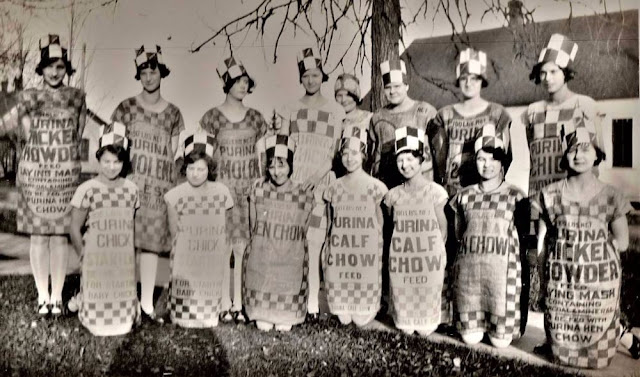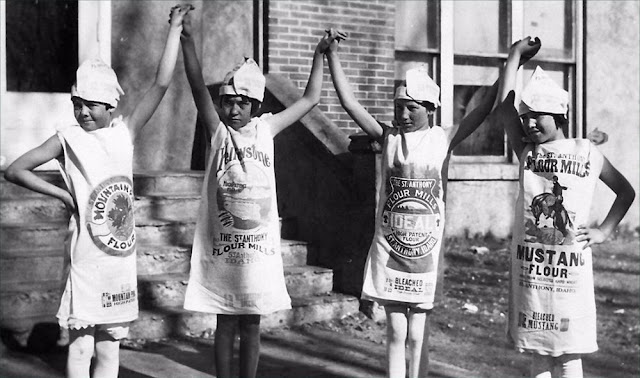Back in the 1930s, flour companies began noticing that women were turning their cotton flour sacks into clothing, diapers, dish cloths and more. Times were hard and the companies decided to help families out by packaging their flour in beautiful patterns.
Life on America’s farms in the 1920s and 1930s meant hard work and frugal habits. Farm families were used to “making do” with what they had, wasting nothing that could be recycled or reused. With feed sacks and flour bags, farmwomen took thriftiness to new heights of creativity, transforming the humble bags into dresses, underwear, towels, curtains, quilts, and other household necessities.
By the 1940s the bag manufacturers were turning out bags in bright colors and printed designs. It was felt that these designs and colors would boost sales, because the woman of the house would always select the brand with the most attractive fabric. During World War II, there was a shortage of cotton fabric for the civilian population, and the recycling of bags became a necessity, encouraged by the government.
After the war, the bags were not only a sign of domestic thrift; they also gave rural women a sense of fashion. National sewing contests were organized as a way for women to show off their skills, and manufacturers to show off their designs. Women frequently sold their surplus bags to others as a way of picking up cash to aid in running the home.

1930s Flour Sacks

1930s Flour Sacks

1930s Flour Sacks

1930s Flour Sacks
















